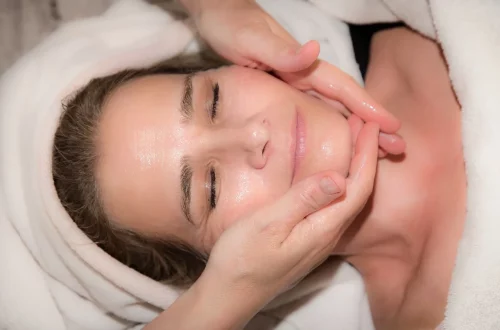
Understanding Hot Spots on Feet: Causes and Remedies Explained
Understanding foot health is essential for maintaining overall well-being, as our feet bear the weight of our bodies and support our daily activities. Hot spots on the feet, often characterized by localized areas of discomfort or irritation, can arise from various factors, ranging from ill-fitting shoes to underlying health conditions. These discomforts can not only hinder mobility but also impact daily life, making it important to understand their causes and potential remedies.
Foot hot spots can manifest in numerous ways, including redness, swelling, or a burning sensation. While they may seem like a minor inconvenience, persistent hot spots can lead to more serious issues if not addressed properly. The reasons behind these discomforts are often multifaceted, involving mechanical, dermatological, and sometimes systemic factors. Identifying the root cause of foot hot spots is crucial for effective treatment and prevention.
In addition to understanding the causes, it is also important to explore various remedies that can alleviate discomfort. From choosing appropriate footwear to implementing foot care routines, there are several strategies that individuals can adopt to promote foot health and prevent the recurrence of hot spots. Here, we delve deeper into the causes, preventive measures, and effective remedies to help individuals achieve optimal foot comfort.
Common Causes of Hot Spots on Feet
Hot spots on the feet can be attributed to several common factors that often interact in complex ways. One of the primary causes is friction, which occurs when the skin rubs against footwear, socks, or other surfaces. This friction can lead to skin irritation, blisters, and inflammation. Ill-fitting shoes, especially those that are too tight or too loose, significantly contribute to friction-induced hot spots. New shoes can also pose a problem, as they often require a break-in period during which the material can rub against the skin.
Another contributing factor is moisture. Sweaty feet can create a damp environment that increases the likelihood of friction, leading to hot spots. This is particularly common in athletes or individuals who are on their feet for extended periods. Conditions such as hyperhidrosis, which causes excessive sweating, can exacerbate the problem.
Foot structure and alignment also play a critical role in the development of hot spots. Individuals with flat feet, high arches, or other structural abnormalities may experience uneven weight distribution, leading to increased pressure on specific areas of the foot. This pressure can result in localized discomfort or irritation.
Additionally, underlying medical conditions such as diabetes or peripheral neuropathy can affect foot sensitivity and increase the risk of hot spots. These conditions may lead to a reduced ability to sense pain or discomfort, allowing hot spots to develop without the individual being aware of them. Thus, understanding the various causes of hot spots is vital for both prevention and treatment.
Preventive Measures for Foot Comfort
Preventing hot spots on the feet involves a proactive approach to foot care and footwear choices. The first step is to invest in quality footwear that fits properly. Shoes should provide ample room for the toes, support the arch, and offer cushioning to absorb impact. It’s recommended to have feet measured regularly, as foot size can change over time.
Choosing the right socks is equally important. Opt for moisture-wicking materials that help keep feet dry, as dampness can increase friction. Avoid cotton socks, as they tend to retain moisture. Instead, select synthetic blends designed to wick away sweat, reducing the likelihood of friction and irritation.
Regular foot care practices can also help prevent hot spots. This includes keeping feet clean and dry, regularly trimming toenails to prevent ingrown nails, and moisturizing dry areas of the skin to maintain elasticity. Additionally, incorporating foot exercises and stretches can improve circulation and flexibility, helping to prevent structural issues that contribute to hot spots.
For athletes or individuals who are physically active, using blister prevention products such as friction-reducing balms or specialized blister pads can provide an extra layer of protection. These products can help reduce friction and absorb shock, making them particularly useful during prolonged activities.
Lastly, being mindful of activity levels and avoiding overexertion can help prevent hot spots. If you know you’ll be on your feet for extended periods, taking breaks to rest and elevate your feet can alleviate pressure and reduce the risk of developing discomfort.
Effective Remedies for Hot Spots
When hot spots do occur, addressing them promptly is crucial to prevent further complications. One of the first steps is to remove any footwear that may be causing irritation. Allowing the feet to breathe can help reduce inflammation and promote healing.
Applying a cold compress to the affected area can provide immediate relief from discomfort. This can be done with a clean cloth soaked in cold water or a cold pack wrapped in a towel. Cold therapy can help reduce swelling and numb the pain associated with hot spots.
Over-the-counter topical treatments, such as anti-inflammatory creams or gels, can also be beneficial. These products can help alleviate pain and reduce inflammation in the affected area. If blisters have formed, it’s important to keep them clean and covered to prevent infection. In cases of severe blisters, it may be necessary to seek medical advice for proper treatment.
For individuals with ongoing issues or those suffering from conditions like diabetes, consulting a healthcare professional is advisable. They can provide tailored advice and may recommend special orthotic devices or modifications to footwear to alleviate pressure points. Regular foot check-ups can also help monitor any changes or complications that may arise.
In addition to topical treatments, incorporating a healthy diet rich in vitamins and minerals can support skin health and overall foot comfort. Nutrients such as vitamin E and omega-3 fatty acids can promote healing and reduce inflammation, contributing to better foot health.
When to Seek Professional Help
While many hot spots can be managed with self-care and preventive measures, there are instances when professional medical attention is warranted. If hot spots persist despite home treatments or are accompanied by severe pain, swelling, or signs of infection, it is crucial to consult a healthcare professional.
Individuals with underlying health conditions such as diabetes or circulatory issues should be especially vigilant. These conditions can complicate foot health and increase the risk of serious complications. Regular check-ups with a podiatrist can help in the early detection of any concerning changes.
Additionally, if any changes in skin color, temperature, or sensation occur, seeking professional advice is essential. These symptoms can indicate more serious underlying issues that require medical intervention.
In conclusion, understanding the causes of hot spots on the feet, implementing preventive measures, and utilizing effective remedies can significantly enhance foot comfort and overall health. By paying attention to foot care and recognizing when to seek professional guidance, individuals can maintain healthier feet and enjoy a more active lifestyle.
**Disclaimer:** This article is intended for informational purposes only and should not be considered medical advice. If you have health concerns or persistent foot issues, please consult a qualified healthcare professional.




